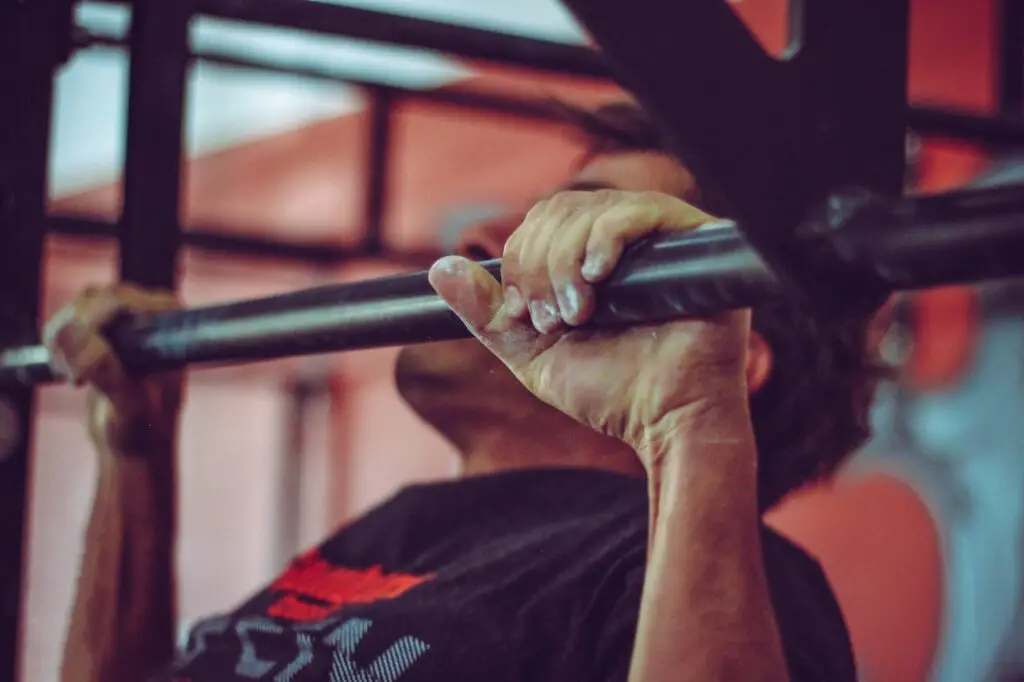High-Intensity Interval Training (HIIT) has gained significant popularity in recent years as an effective and efficient workout method for men. With its intense bursts of activity followed by short recovery periods, HIIT offers numerous benefits that can positively impact men’s fitness and overall health. In this article, we will explore the advantages of incorporating HIIT into your exercise routine and provide guidance on how to get started.
High-Intensity Interval Training, or HIIT, is a form of cardiovascular exercise that alternates between short bursts of intense activity and brief periods of rest or low-intensity exercise. Unlike traditional steady-state cardio workouts, HIIT pushes the body to its limits, resulting in a more efficient and effective training session.
What is HIIT?
HIIT, which stands for High-Intensity Interval Training, is a dynamic and challenging form of cardiovascular exercise. It involves alternating short bursts of intense physical activity with brief recovery periods or low-intensity exercises. Unlike traditional steady-state cardio workouts, where you maintain a consistent intensity throughout, HIIT pushes your body to its limits by incorporating high-intensity intervals that elevate your heart rate and engage multiple muscle groups.
The fundamental principle of HIIT is to maximize the intensity and effort exerted during the active intervals, aiming for approximately 80-95% of your maximum heart rate. This intensity stimulates various physiological responses in the body, leading to improved fitness levels and numerous health benefits.
By utilizing short bursts of vigorous exercise, HIIT forces your body to tap into its anaerobic energy systems, relying on stored glycogen for fuel. This metabolic demand triggers a cascade of effects, including increased calorie burn, elevated oxygen consumption, and a heightened metabolic rate, even after the workout has ended.
The duration of a typical HIIT session can range from 10 to 30 minutes, depending on your fitness level and available time. Within this timeframe, you’ll perform several intervals, each lasting anywhere from 20 to 60 seconds, followed by brief recovery periods of 10 to 30 seconds. This cycle is repeated throughout the session, creating a challenging and time-efficient workout experience.

Related: The Best Strength Training Exercises for Men: A Comprehensive Guide for Beginners
How does HIIT work?
The effectiveness of HIIT lies in its unique approach to challenging the body’s energy systems and creating a metabolic disturbance that leads to various physiological adaptations. By alternating between high-intensity intervals and recovery periods, HIIT maximizes calorie burn, enhances cardiovascular fitness, and stimulates muscle growth.
During the high-intensity intervals, your body is pushed to its limits, utilizing the anaerobic energy system. This energy system relies on stored glycogen for fuel, providing quick bursts of energy without the need for oxygen. As a result, your heart rate increases significantly, and your muscles work at their maximum capacity.
The intense effort during the active intervals creates what is known as the “oxygen debt.” This means that your body’s demand for oxygen exceeds its current supply, leading to an oxygen deficit. To compensate for this deficit and restore the body to its pre-exercise state, a process called excess post-exercise oxygen consumption (EPOC) is initiated.

Related: How to Stay Active When You Have a Desk Job
Benefits of HIIT
High-Intensity Interval Training (HIIT) provides a multitude of benefits that make it a highly effective and efficient workout method for men. Let’s explore some of the key advantages in more detail:
HIIT is renowned for its ability to maximize calorie burn in a short amount of time. The intense intervals push your body to its limits, resulting in a higher calorie expenditure compared to traditional cardio exercises. This makes HIIT a great choice for weight loss and fat burning.
By incorporating intense bursts of activity, HIIT challenges your cardiovascular system and improves its efficiency. Over time, this leads to increased endurance, improved heart health, and enhanced oxygen utilization. Regular HIIT workouts can strengthen your heart and lungs, supporting overall cardiovascular fitness.
One of the biggest advantages of HIIT is its time-saving nature. With HIIT, you can achieve significant fitness gains in a shorter workout duration compared to longer, steady-state cardio sessions. This makes it ideal for individuals with busy schedules who struggle to find time for exercise.
While HIIT is primarily known for its cardiovascular benefits, it also promotes muscle building and strength gains. The intense intervals engage multiple muscle groups and stimulate muscle growth. This can result in improved muscle tone, increased strength, and a more defined physique.
HIIT triggers the “afterburn effect,” also known as excess post-exercise oxygen consumption (EPOC). This means that after a HIIT workout, your body continues to burn calories at an elevated rate as it works to restore oxygen levels and recover from the intense exercise. The increased metabolic rate can last for hours, contributing to overall calorie expenditure.
HIIT has been shown to positively impact hormone levels, including testosterone. Testosterone is a crucial hormone for muscle development, strength, and overall well-being in men. Incorporating HIIT into your routine can naturally enhance testosterone production, supporting muscle growth and vitality.
HIIT offers a wide range of exercises and training modalities, providing versatility and the opportunity for customization. You can choose from bodyweight exercises, cardio machines, free weights, or even outdoor activities to create a HIIT routine that suits your preferences and fitness goals.

Related: 14 Benefits of Resistance Training for Men
HIIT for Men: Why It’s Effective
Increased Fat Burning
One of the primary benefits of HIIT for men is its ability to promote fat loss. The intense nature of HIIT workouts elevates the heart rate, stimulating the body’s fat-burning mechanisms. HIIT also helps preserve muscle mass, which is essential for maintaining a healthy metabolism.
Improved Cardiovascular Health
Regular participation in HIIT has been shown to improve cardiovascular health in men. The intense intervals of exercise followed by short rest periods help strengthen the heart and improve its efficiency. HIIT workouts increase oxygen uptake and enhance the body’s ability to deliver oxygen to the muscles, resulting in improved overall cardiovascular fitness.
Boost in Testosterone Levels
For men, maintaining optimal testosterone levels is crucial for various aspects of health, including muscle growth, energy levels, and libido. Studies have shown that HIIT can lead to a temporary increase in testosterone production immediately after exercise. This hormonal response can contribute to enhanced muscle development and overall vitality.
Enhanced Muscle Building
HIIT is not only effective for burning fat but also for building lean muscle mass. The combination of intense bursts of exercise and brief recovery periods stimulates the release of growth hormone, which plays a vital role in muscle growth and repair. Incorporating resistance exercises into HIIT workouts further promotes muscle development and strength.
Time Efficiency
In today’s fast-paced world, time is often a limiting factor when it comes to maintaining a regular exercise routine. HIIT offers a solution by providing a highly efficient workout in a shorter time frame. With HIIT, men can achieve significant fitness gains in as little as 20 minutes, making it easier to incorporate exercise into busy schedules.
Related: How to Stay Motivated with Your Fitness Routine
How to Incorporate HIIT into Your Fitness Routine
To start incorporating HIIT into your fitness routine, consider the following guidelines:
Warm-up and Cool-down
A proper warm-up and cool-down are crucial components of any High-Intensity Interval Training (HIIT) session. They serve to prepare your body for the intense workout ahead and aid in the recovery process afterward. Let’s explore the importance of warm-up and cool-down in more detail:
Prior to starting a HIIT workout, it’s essential to warm up your body. A warm-up gradually increases your heart rate, improves blood flow, and primes your muscles for the upcoming exercise. It helps loosen stiff joints, enhances flexibility, and mentally prepares you for the workout ahead. A well-designed warm-up includes dynamic movements, joint mobilization exercises, active stretching, and a gradual increase in intensity.
After completing a challenging HIIT session, a proper cool-down allows your body to gradually transition from high-intensity exercise to a state of rest. It helps lower your heart rate, prevent blood pooling, and reduce muscle soreness. A cool-down typically includes low-intensity cardiovascular activity, static stretching, and relaxation techniques such as deep breathing.

Related: The Importance of Stretching for Men
Choosing HIIT Exercises
When it comes to High-Intensity Interval Training (HIIT), the exercises you choose play a crucial role in the effectiveness and enjoyment of your workout. Here are some factors to consider when selecting HIIT exercises:
Choose exercises that match your fitness level and abilities. If you’re a beginner, start with basic bodyweight movements and gradually progress to more challenging exercises as you build strength and endurance.
Incorporate exercises that target multiple muscle groups simultaneously. Compound movements like squats, lunges, push-ups, and burpees engage multiple muscles, allowing for efficient calorie burn and overall body conditioning.
Keep your workouts engaging and avoid plateauing by incorporating a variety of exercises. Mix up cardio exercises like running, cycling, or jumping rope with strength-based exercises using resistance bands, kettlebells, or dumbbells. Additionally, gradually increase the intensity or duration of your intervals over time to continue challenging your body.
Choose exercises that you can perform with proper form to reduce the risk of injury. If you’re unsure about the correct technique, consider seeking guidance from a qualified fitness professional or using instructional videos to ensure proper execution.
Related: The Best Foods to Eat Before and After a Workout
Creating a HIIT Workout Plan
Designing a structured and effective High-Intensity Interval Training (HIIT) workout plan is essential for maximizing results and maintaining consistency. Here are some steps to help you create your own HIIT workout plan:
Determine your fitness goals, whether it’s weight loss, improved cardiovascular endurance, muscle building, or overall fitness. Clearly defining your goals will guide your workout plan and help you measure progress.
Decide how many HIIT sessions you will incorporate into your weekly routine. Start with two to three sessions per week and adjust based on your schedule and fitness level.
Determine the length of your HIIT sessions. Aim for 20-30 minutes, including warm-up and cool-down periods. As you progress, you can gradually increase the duration of your intervals or the number of rounds.
Select a variety of HIIT exercises that target different muscle groups and provide a mix of cardiovascular and strength-based movements. Choose exercises that align with your fitness level and preferences.
Determine the work-to-rest ratio for each interval. A common approach is to start with a 1:1 ratio, such as 30 seconds of high-intensity exercise followed by 30 seconds of rest or active recovery. Adjust the ratio based on your fitness level and the intensity of the exercises.
Incorporate progression into your plan to challenge your body and avoid plateauing. Gradually increase the intensity, duration, or number of intervals as your fitness improves. This could include shorter rest periods, longer work intervals, or more rounds.
Related: The Best Ways to Fuel Your Body for Optimal Performance
Safety Considerations for HIIT
While HIIT offers numerous benefits, it’s important to prioritize safety during your workouts. Consider the following precautions:
Consulting with a Healthcare Professional
If you have any underlying health conditions or concerns, it’s wise to consult with a healthcare professional before starting a HIIT program. They can provide personalized advice and ensure that HIIT is suitable for your specific circumstances.
Proper Form and Technique
Maintaining proper form and technique is crucial to prevent injuries during HIIT workouts. Focus on quality movements rather than quantity. If you’re unsure about proper form, consider working with a qualified fitness trainer or instructor.
Gradual Progression
Start with shorter intervals and lower intensity levels, especially if you’re new to HIIT. Gradually increase the intensity and duration of your intervals as your fitness improves. Push yourself, but listen to your body’s signals and avoid overexertion.
Listening to Your Body
Pay attention to how your body responds to HIIT workouts. It’s normal to feel challenged during HIIT, but if you experience severe pain, dizziness, or shortness of breath, it’s important to listen to your body and modify or stop the exercise. Take rest days as needed to allow for proper recovery and prevent overtraining.
Related: The 11 Best Yoga Poses for Men
Concluding this Article
In conclusion, High-Intensity Interval Training (HIIT) offers a multitude of benefits for men who are looking to maximize their fitness results and improve their overall health. By incorporating HIIT into your exercise routine, you can experience increased fat burning, improved cardiovascular health, a boost in testosterone levels, enhanced muscle building, and the convenience of time efficiency.
To get started with HIIT, remember to warm up your muscles and choose exercises that challenge you while considering your fitness level. Gradually increase the intensity and duration of your intervals as you progress. It’s important to prioritize safety by consulting with a healthcare professional, maintaining proper form and technique, progressing gradually, and listening to your body’s signals.
Now is the time to take advantage of the benefits that HIIT can offer. Whether you’re aiming to shed excess fat, improve your cardiovascular fitness, build lean muscle, or simply optimize your workout time, HIIT can be a game-changer in your fitness journey.
Frequently Asked Questions (FAQs)
Q: Can anyone do HIIT, or is it only suitable for advanced fitness levels?
A: HIIT can be tailored to suit various fitness levels. Beginners can start with modified exercises and shorter intervals, gradually progressing as they become more comfortable and fit.
Q: How often should I incorporate HIIT into my fitness routine?
A: It’s recommended to include HIIT workouts 2-3 times per week, allowing for adequate recovery between sessions. Remember to listen to your body and adjust the frequency as needed.
Q: Can HIIT be done without any equipment?
A: Absolutely! HIIT can be performed using only your body weight, making it accessible for anyone, anywhere. However, incorporating equipment like dumbbells or resistance bands can add variety and intensity to your workouts.
Q: Is HIIT suitable for individuals with joint issues?
A: HIIT can be intense on the joints, but modifications can be made to accommodate individuals with joint issues. Low-impact exercises like cycling or swimming can be incorporated, and proper form and technique should be emphasized to minimize joint stress.
Q: Can HIIT help with weight loss?
A: Yes, HIIT is highly effective for weight loss due to its ability to burn calories and increase metabolic rate. Combined with a healthy and balanced diet, HIIT can be a powerful tool for achieving weight loss goals.


Pingback: The Top 17 Best Men's Fragrances of All Time - The Gentlemen Diary
Pingback: The Benefits of Taking Glutamine Supplements for Muscle Recovery - The Gentlemen Diary